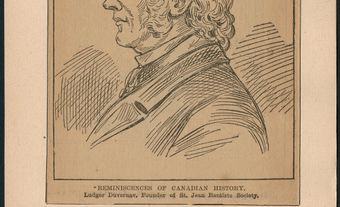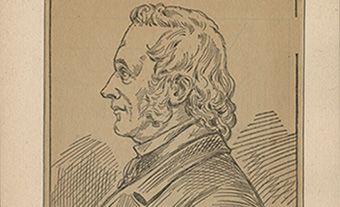Almanacs
Almanacs, annual compilations in sheet or book form which included a calendar, with saints' days and other significant dates, and astronomical phenomena such as eclipses, phases of the moon and transits of the planets, were a well-established tradition in Britain and the American colonies by the mid-18th century. Canada's first printers brought this tradition with them, adapting it to the French, English or Native market. The almanac was a local publication since astronomical tables were calculated according to the longitude and latitude of a particular geographical area. Other information of local interest, such as lists of church and civic officials, postal and customs regulations, and stagecoach and ferry services, was also frequently included. Cheap, practical and annually in demand, the almanac was a "bestseller" for early printers and an important source of revenue.
Early Almanacs
Many of the earliest almanacs printed in Canada no longer survive. The Brown and Gilmore office in Québec City is known to have issued a sheet almanac each year from at least 1765 and an almanac for the Native trade from the following year, but most of these early wall calendars are known only from the printers' records. There had been a printing office in Halifax as early as 1751, but it is not known if an almanac was produced there. Brown and his successor, John Neilson, later published the popular Almanach de Québec for over 60 years beginning in 1780. Anthony Henry of Halifax printed Canada's oldest surviving almanac, The Nova-Scotia Calendar, for 1770.
In 1788 Henry began the publication of a second almanac, Der Neu-Schottländische Calender, for German-speaking settlers of the colony. It is believed to be the first German-language publication printed in Canada. Christopher Sower printed New Brunswick's first almanac (1786); and the oldest surviving almanac printed in Ontario is Tiffany's Upper-Canada Almanac for the year 1802, published by Silvester Tiffany at Niagara (Niagara-on-the-Lake). The King's Printers at York (Toronto) published almanacs with increasing regularity in the early years of the 19th century.
Of particular interest today are those issued by Charles Fothergill in the 1820s because of the "Sketch of the Present State of Canada" included each year. Few almanacs seem to have been produced in the Prairie provinces, perhaps because of the relatively late arrival of printing there. Some almanacs published in the American northwest included information about Vancouver Island and the mainland, but The British Columbia Almanac, which was published in Victoria (1895-98), is the only one known to have been produced in the province.
Use of the Almanac
The use of the almanac as a vehicle for political opinion has a long history in English-speaking countries. A Canadian example is William L. Mackenzie's Caroline Almanack for 1840, published while the rebel leader was in exile in Rochester, NY. Special-interest groups - religious, political, professional, labour and commercial - used the almanac to sell their ideas. Particularly prolific in the late 19th and early 20th centuries were the almanacs issued by patent-medicine manufacturers, in which the calendar itself is lost in a sea of advertisements and testimonials.
Canada's oldest continually published almanac, The Canadian Almanac & Directory, first issued by Hugh Scobie of Toronto for 1848, still retains a small calendar and astronomical section. As quick reference sources for information about all aspects of Canadian life, this directory, now also available as an electronic database, is still consulted.

 Share on Facebook
Share on Facebook Share on X
Share on X Share by Email
Share by Email Share on Google Classroom
Share on Google Classroom


